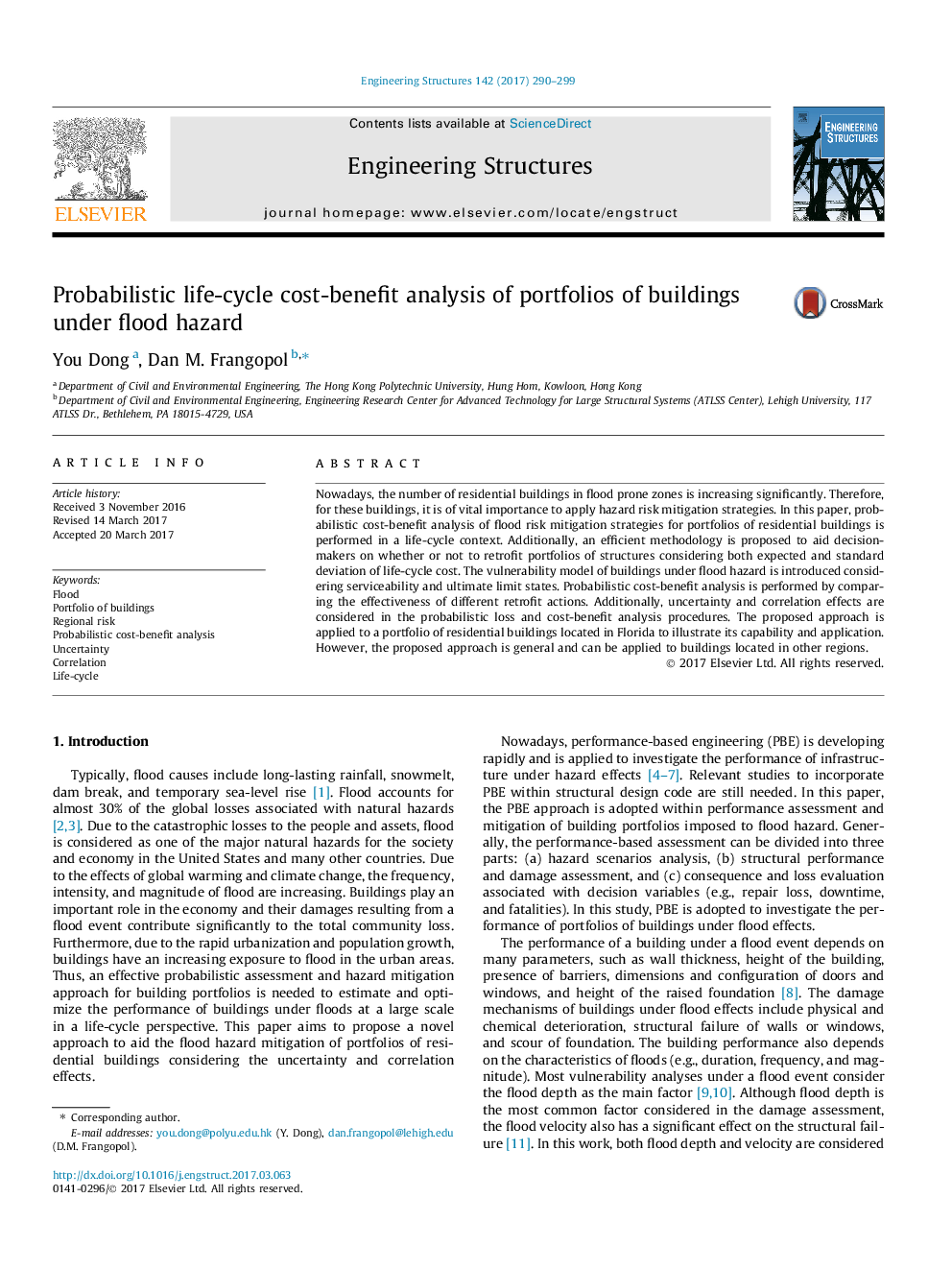| Article ID | Journal | Published Year | Pages | File Type |
|---|---|---|---|---|
| 4919973 | Engineering Structures | 2017 | 10 Pages |
Abstract
Nowadays, the number of residential buildings in flood prone zones is increasing significantly. Therefore, for these buildings, it is of vital importance to apply hazard risk mitigation strategies. In this paper, probabilistic cost-benefit analysis of flood risk mitigation strategies for portfolios of residential buildings is performed in a life-cycle context. Additionally, an efficient methodology is proposed to aid decision-makers on whether or not to retrofit portfolios of structures considering both expected and standard deviation of life-cycle cost. The vulnerability model of buildings under flood hazard is introduced considering serviceability and ultimate limit states. Probabilistic cost-benefit analysis is performed by comparing the effectiveness of different retrofit actions. Additionally, uncertainty and correlation effects are considered in the probabilistic loss and cost-benefit analysis procedures. The proposed approach is applied to a portfolio of residential buildings located in Florida to illustrate its capability and application. However, the proposed approach is general and can be applied to buildings located in other regions.
Related Topics
Physical Sciences and Engineering
Earth and Planetary Sciences
Geotechnical Engineering and Engineering Geology
Authors
You Dong, Dan M. Frangopol,
